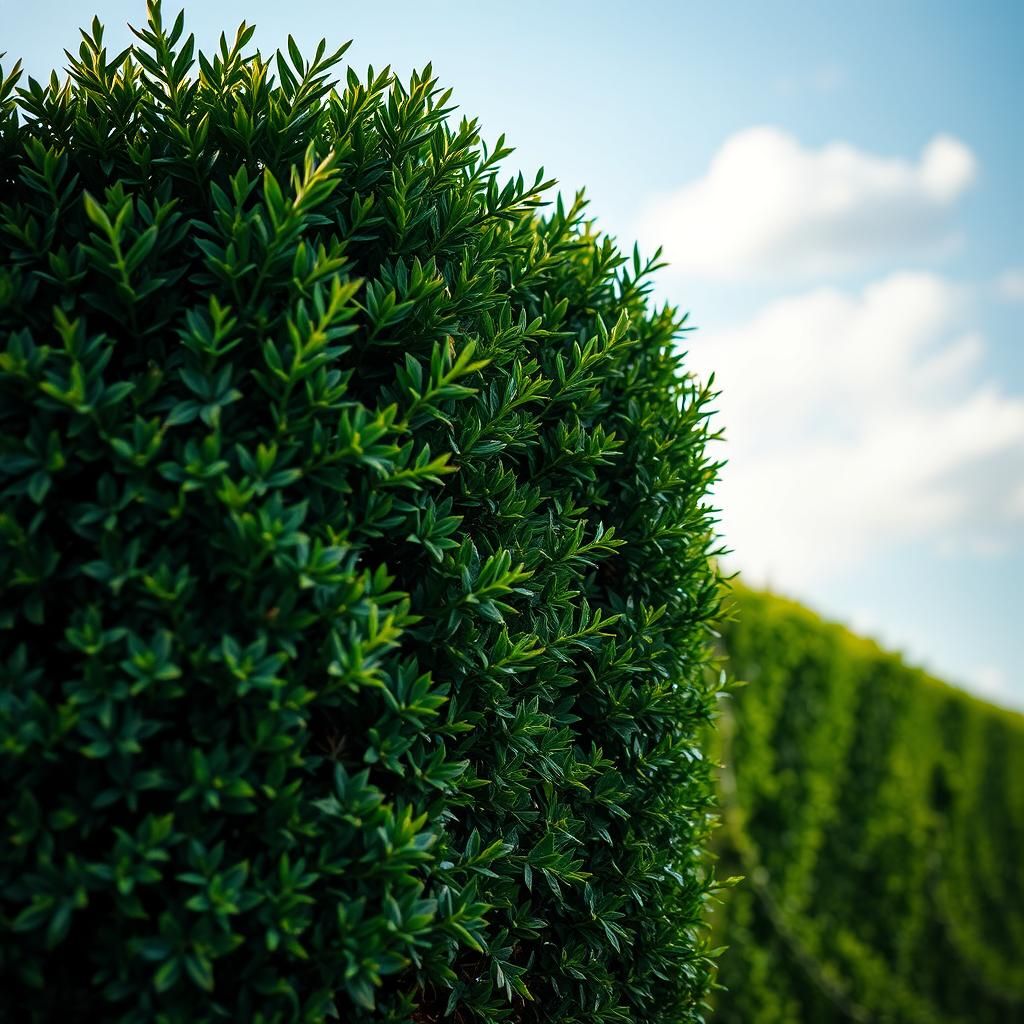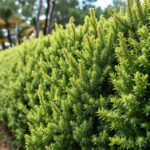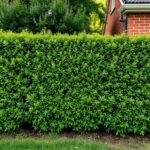Is a Hedge the Same as a Shrub? Uncovering the Differences and Similarities

When it comes to landscaping, the terms hedge and shrub are often used interchangeably, leading to potential confusion. While both serve aesthetic and functional purposes in gardens and outdoor spaces, they have distinct characteristics that set them apart. This article aims to uncover the differences and similarities between hedges and shrubs, exploring their definitions, growth habits, uses, and maintenance requirements. Whether you're a gardening enthusiast or simply looking to enhance your outdoor environment, understanding these two elements can help you make informed choices for your landscape design. Join us as we delve into the fascinating world of hedges and shrubs.
Is a Hedge the Same as a Shrub?
A hedge and a shrub are not the same, although they are closely related in the world of landscaping and gardening. A hedge refers specifically to a row of plants, often consisting of multiple shrubs, that are grown closely together to form a boundary, screen, or privacy wall. Hedging plants are typically pruned to maintain a desired height and width, while shrubs can be standalone plants that can grow independently or in groups. While all hedges are made up of shrubs or similar plants, not all shrubs are used in hedges. Hence, while they share similarities, their purposes and characteristics differ significantly.
Defining a Hedge
A hedge is defined as a dense planting of shrubbery or other plants that creates a barrier or fence-like structure. They are often cultivated for privacy, security, or aesthetic reasons. Hedges can vary in height and shape, depending on the plants used and the desired effect. Common plants for hedges include boxwood, privet, and yew, which can withstand frequent trimming to maintain a distinct form.
Defining a Shrub
A shrub is a small to medium-sized woody plant that typically has multiple stems, as opposed to a single trunk like a tree. Shrubs can vary widely in size, shape, and foliage, ranging from decorative flowering plants to more utilitarian varieties used in landscaping. They are often characterized by their ability to add texture and color to gardens and landscapes, providing habitat for wildlife and contributing to biodiversity.
Differences in Purpose
The primary difference between a hedge and a shrub lies in their intended purpose. Hedges are primarily used as a landscape element to delineate property lines, provide privacy, or serve as sound barriers. In contrast, shrubs are often planted for their aesthetic qualities, providing color, fragrance, and texture within a garden space. While both can serve functional and decorative roles, hedges emphasize structure and boundary, whereas shrubs focus more on individual plant beauty.
Maintenance Requirements
The maintenance requirements for hedges often differ from those of individual shrubs. Hedges typically require regular trimming and shaping to maintain their intended appearance and to promote healthy growth. Depending on the species, some hedges may need more frequent pruning to prevent them from becoming overgrown or unruly. On the other hand, shrubs may require less frequent attention, focusing more on general care such as watering and disease management.
Common Plant Choices
When selecting plants for a hedge, gardeners often choose specific species known for their ability to thrive in dense formations. Common choices include laurel, holly, and various types of conifers. For shrubs, the selection is broader and can include a variety of flowering plants such as rhododendron, hydrangea, and azalea. The choice of plants will depend on factors such as climate, soil conditions, and the desired visual effect.
| Criteria | Hedge | Shrub |
|---|---|---|
| Definition | Row of closely planted plants | Small to medium-sized woody plant |
| Purpose | Boundary, privacy, security | Aesthetic, decorative, habitat |
| Maintenance | Regular trimming and shaping | General care, less frequent maintenance |
| Common Plants | Boxwood, privet, yew | Rhododendron, hydrangea, azalea |
| Structure | Dense, uniform appearance | Diverse shapes and sizes |
What is the lifespan of a hedge?

The lifespan of a hedge can vary significantly depending on several factors, including the species of the plant, the growing conditions, maintenance practices, and the local climate. Generally, most garden hedges can live anywhere from 10 to 50 years, and some species can even exceed this range.
Factors Affecting Hedge Lifespan
The lifespan of a hedge is influenced by multiple factors that play a crucial role in its health and longevity. Understanding these factors can help in selecting and maintaining hedges more effectively.
See also:
- Plant Species: Different species have different lifespans. For instance, a mature Boxwood hedge can live for several decades, while Holly and Laurel tend to have shorter lifespans.
- Soil Quality: Nutrient-rich and well-draining soil promotes healthy growth, which can increase the lifespan of the hedge.
- Climate: Hedges in regions with extreme weather conditions may experience stress, leading to a shorter lifespan.
Common Types of Hedges and Their Lifespans
Different types of hedges have varying lifespans based on their genetic makeup and environmental adaptability. Knowing the typical lifespan of popular hedge types can help in long-term planning for gardens and landscapes.
- Boxwood: This classic hedge can last from 30 to 50 years if properly maintained.
- Privet: A fast-growing hedge, privet typically lasts about 20 to 30 years.
- Cypress: Known for its durability, cypress hedges can live upwards of 50 years when cared for properly.
Maintenance Tips for Longer Lifespan
Proper maintenance is essential for extending the lifespan of a hedge. Regular care can prevent diseases, promote healthy growth, and ensure visual appeal over time.
- Regular Pruning: Trimming hedges annually helps maintain their shape and encourages robust growth.
- Watering: Adequate watering, especially in the early years, is critical for establishing a strong root system.
- Pest Control: Monitoring for pests and diseases can help prevent serious damage to the hedge.
Signs of Aging in Hedges
Recognizing the signs of an aging hedge can help gardeners take appropriate actions to rejuvenate or replace them before they decline too much.
- Declining Growth: When new growth becomes sparse or sluggish, it may indicate an aging hedge.
- Yellowing Leaves: This can be a sign of stress or poor health, often linked to aging or environmental factors.
- Increased Disease: Older hedges may become more susceptible to diseases, signaling that they may need replacement.
Rejuvenating an Old Hedge
If a hedge shows signs of aging, there are methods to rejuvenate it, extending its life and improving its appearance.
- Severe Pruning: Cutting back old wood can stimulate new growth and revitalize an aging hedge.
- Applying Fertilizer: Nutrient boosts can support recovery and health during the rejuvenation process.
- Replacing Dead Plants: If part of the hedge is dead or dying, replacing those sections can enhance overall vitality.
What is classified as a hedge?
:max_bytes(150000):strip_icc()/top-evergreens-for-privacy-hedges-1403336-7b7f91c5003b4c57bd28b75bc69b788c.jpg)
A hedge is commonly understood as a method or strategy employed to reduce or offset potential losses in investments or transactions. It involves the use of various financial instruments or market strategies to limit risk. The concept of hedging is prevalent in the financial sector, where investors and businesses seek to protect themselves from adverse price movements in assets, currencies, or commodities. By engaging in hedging activities, entities can achieve a more stable financial outcome and mitigate the impact of market volatility.
Types of Hedging Strategies
Hedging strategies can be classified into several categories, each serving particular purposes and involving different instruments. The most common types include:
- Forward Contracts: Agreements to buy or sell an asset at a predetermined future date and price.
- Options: Contracts that offer the right, but not the obligation, to buy or sell an asset at a specified price before a certain date.
- Futures Contracts: Standardized agreements traded on exchanges to buy or sell assets at a future date for a price agreed upon today.
Hedging with Derivatives
Derivatives are financial instruments whose value is derived from the performance of an underlying asset. They are essential tools in hedging because they can provide protection against fluctuations in asset prices. Common derivatives used in hedging include:
- Swaps: Contracts to exchange cash flows or other financial instruments between parties.
- Options Contracts: As mentioned, these provide flexibility in managing risk associated with price changes.
- Credit Derivatives: Instruments that allow transfer of credit risk from one party to another.
Hedging in Different Markets
The approach to hedging can vary significantly across different markets, including equity, commodity, currency, and interest rate markets. Each market presents unique risks that require tailored hedging strategies, such as:
- Equity Markets: Investors often use options or index futures to hedge against stock market fluctuations.
- Commodity Markets: Futures contracts are commonly used to lock in prices for commodities, protecting against price volatility.
- Currency Markets: Currency forwards and options are utilized to hedge against exchange rate movements.
Benefits and Risks of Hedging
While hedging can provide significant advantages, it is essential to weigh the benefits against the associated risks. Some of the key benefits include:
See also:
- Risk Management: Hedging effectively reduces exposure to unfavorable market conditions.
- Profit Stability: It allows companies and investors to maintain predictable earnings.
- Leverage Opportunities: It can enable entities to take on additional risk while protecting their core investments.
Examples of Hedging Strategies
Practical applications of hedging strategies can be seen in various scenarios. Some common examples include:
- Company Exposure to Oil Prices: An airline may hedge against rising fuel costs by purchasing oil futures.
- Investment Portfolio Protection: An investor might buy put options on their stock holdings to guard against declines in stock prices.
- Foreign Currency Operations: A business with international transactions could use currency options to mitigate foreign exchange risk.
What is the difference between a bush or a shrub?
The terms bush and shrub are often used interchangeably in everyday language, but they can have distinct meanings in horticulture and botany. Both refer to woody plants that are smaller than trees and are characterized by multiple stems arising from the base. However, there are subtle differences in their connotations and classifications.
Definition of Bush
A bush is generally a broad, informal term used to describe any dense, low-growing plant that has multiple stems. Bushes can vary widely in size, shape, and species.
- Variety: Bushes can include various plant types such as flowering bushes, fruit bushes, or even thorny varieties.
- Growth Form: The term often refers to plants that have a bushy appearance, with many branches forming a compact shape.
- Usage: Bushes are commonly used in landscape design, hedges, or as natural barriers in gardens.
Definition of Shrub
A shrub is a more specific term within the plant classification system and typically refers to a perennial woody plant that is smaller than a tree and has multiple stems.
- Characteristics: Shrubs are defined by their permanent stems and lifespan, usually being longer-lasting than herbaceous plants.
- Cultivation: Many shrubs are cultivated for their aesthetic qualities, like foliage and flowers, or for practical purposes, such as providing berries.
- Growth Height: Shrubs typically grow to a height of about 1 to 3 meters (3 to 10 feet).
Botanical Classification
In botanical terms, both bushes and shrubs fall under the category of perennial plants, but they may belong to various families and genera.
- Classification: Shrubs can be classified into deciduous and evergreen species, each with different growth habits.
- Taxonomy: The specific scientific classification can help differentiate among various types of shrubs, while bush lacks formal classification.
- Ecological Roles: Both play crucial roles in ecosystems, with shrubs often serving as habitats for wildlife.
Common Examples
Both terms encompass a wide range of plants, each with unique characteristics. Identifying examples can help clarify the distinction between bushes and shrubs.
- Bush Examples: Some common examples of bushes include blackberry bushes, rose bushes, and bamboo bushes.
- Shrub Examples: Typical examples of shrubs are lavender, hydrangea, and rikki shrub.
- Regional Variations: Certain regions may have specific plants deemed as bushes or shrubs, influenced by local flora.
Practical Considerations in Landscaping
When it comes to landscaping and garden design, understanding the differences between bushes and shrubs can inform better planting strategies.
- Spacing: Bushes may require different spacing compared to shrubs to ensure proper growth and air circulation.
- Maintenance: Maintenance routines can differ as shrubs often need pruning to manage their size and shape.
- Aesthetic Value: Choosing between a bush or a shrub can impact the overall visual appeal and functionality of a garden.
Questions from Our Readers
Is a hedge the same as a shrub?
No, a hedge is not the same as a shrub. A hedge is typically a row of shrubs or small trees planted closely together to form a boundary or a fence-like structure, whereas a shrub is a single plant that can be part of a hedge or stand alone.
What are the main functions of a hedge?
Hedges serve multiple functions, including providing privacy, acting as a windbreak, and offering habitat for wildlife. They can also enhance the aesthetic appeal of a garden or property while serving as a barrier against noise and dust.
See also:
Can any shrub be used to create a hedge?
Not all shrubs are suitable for creating a hedge, as some may grow too tall or display an upright growth habit. Ideal hedge shrubs are usually those that have a dense foliage and can be clipped or shaped to maintain a specific height and thickness.
How do I maintain a hedge effectively?
To maintain a hedge effectively, regular trimming is crucial to encourage growth and prevent it from becoming overgrown. Additionally, ensuring adequate watering, applying fertilizer, and checking for pests or diseases are all essential aspects of hedge care.

If you want to read more articles like Is a Hedge the Same as a Shrub? Uncovering the Differences and Similarities, we recommend you check out our Hedges category.
Leave a Reply

Related Articles